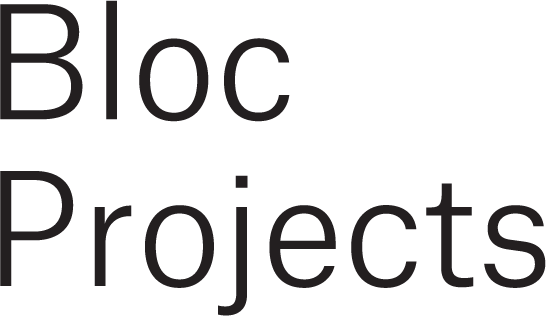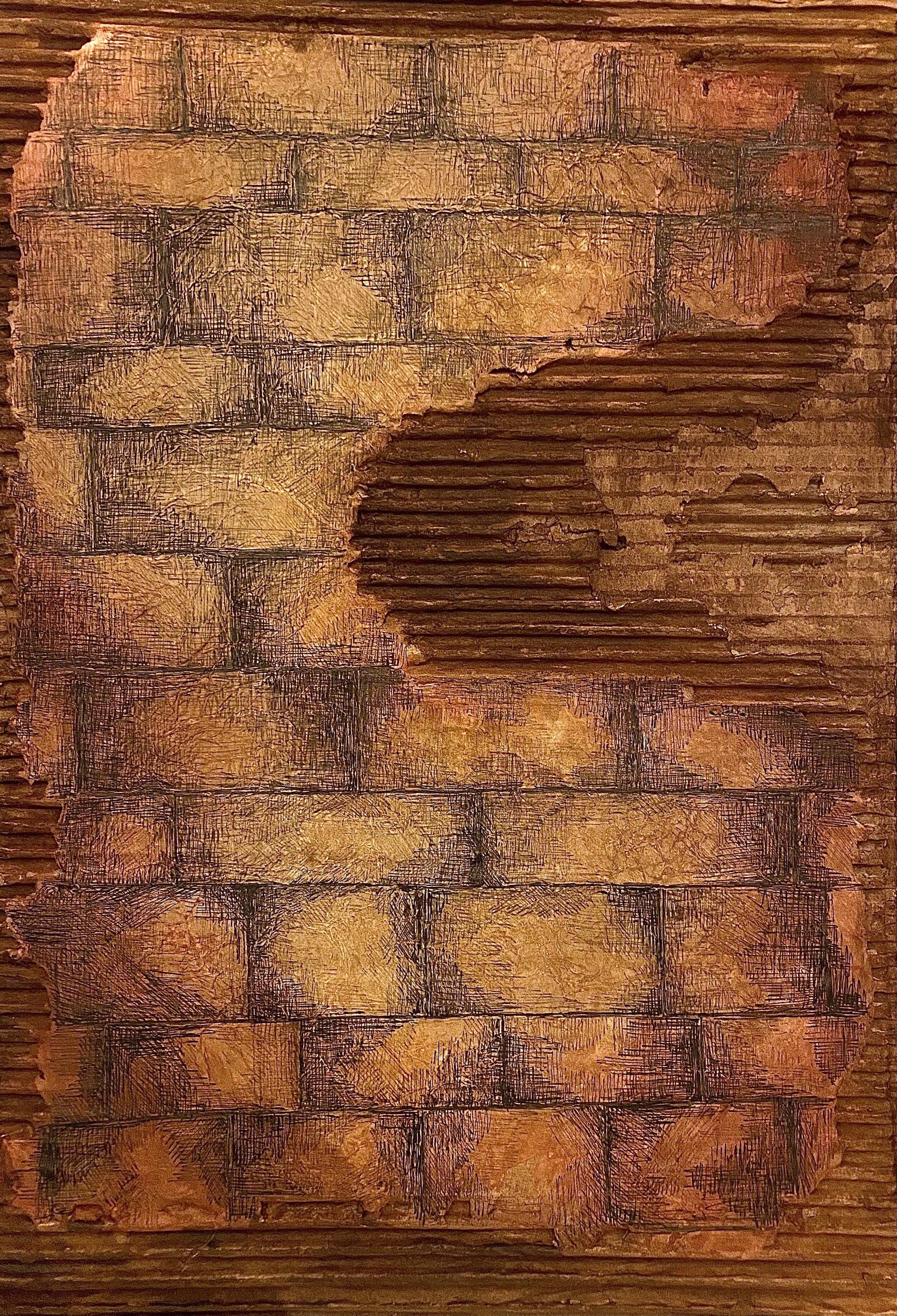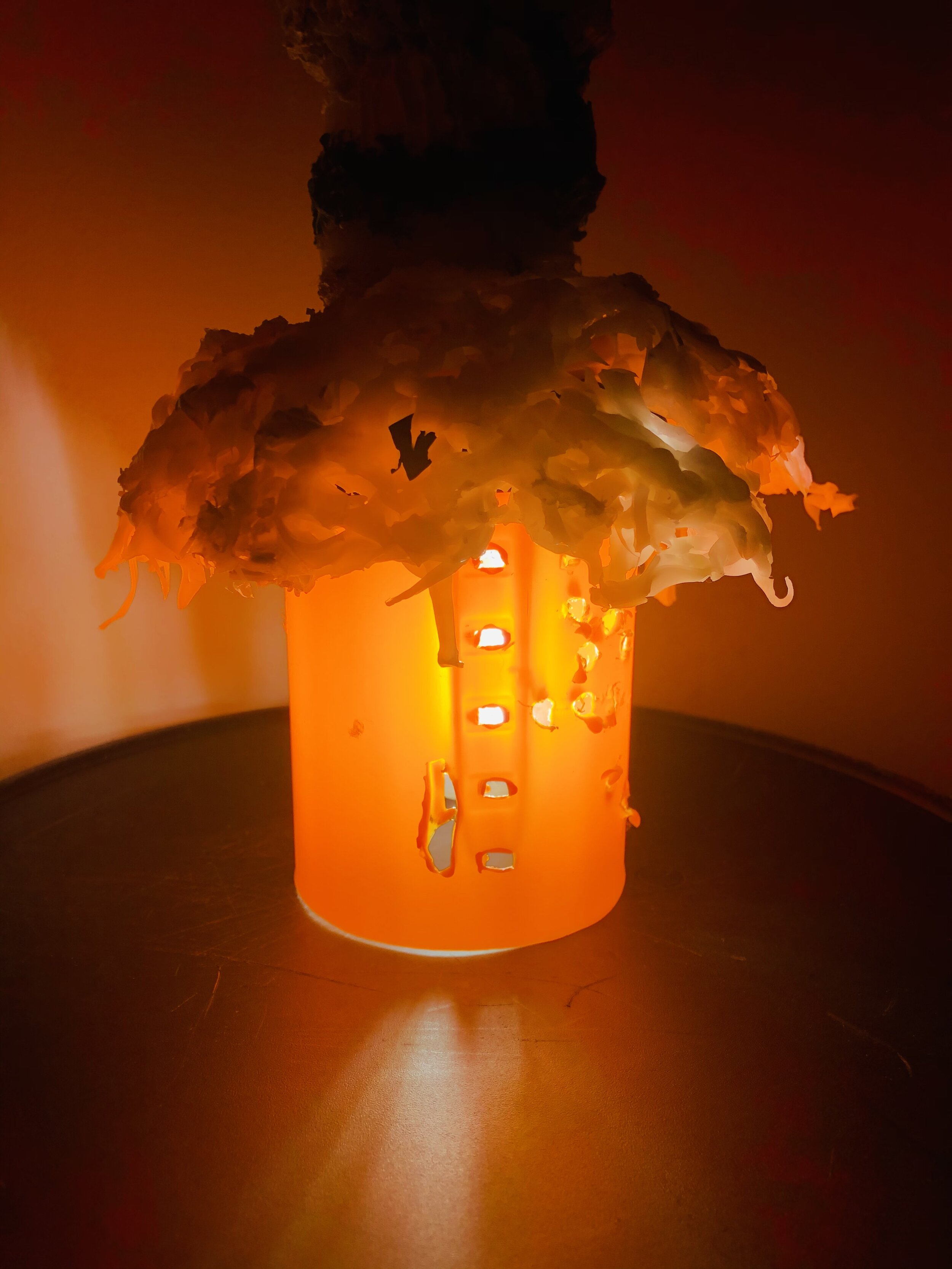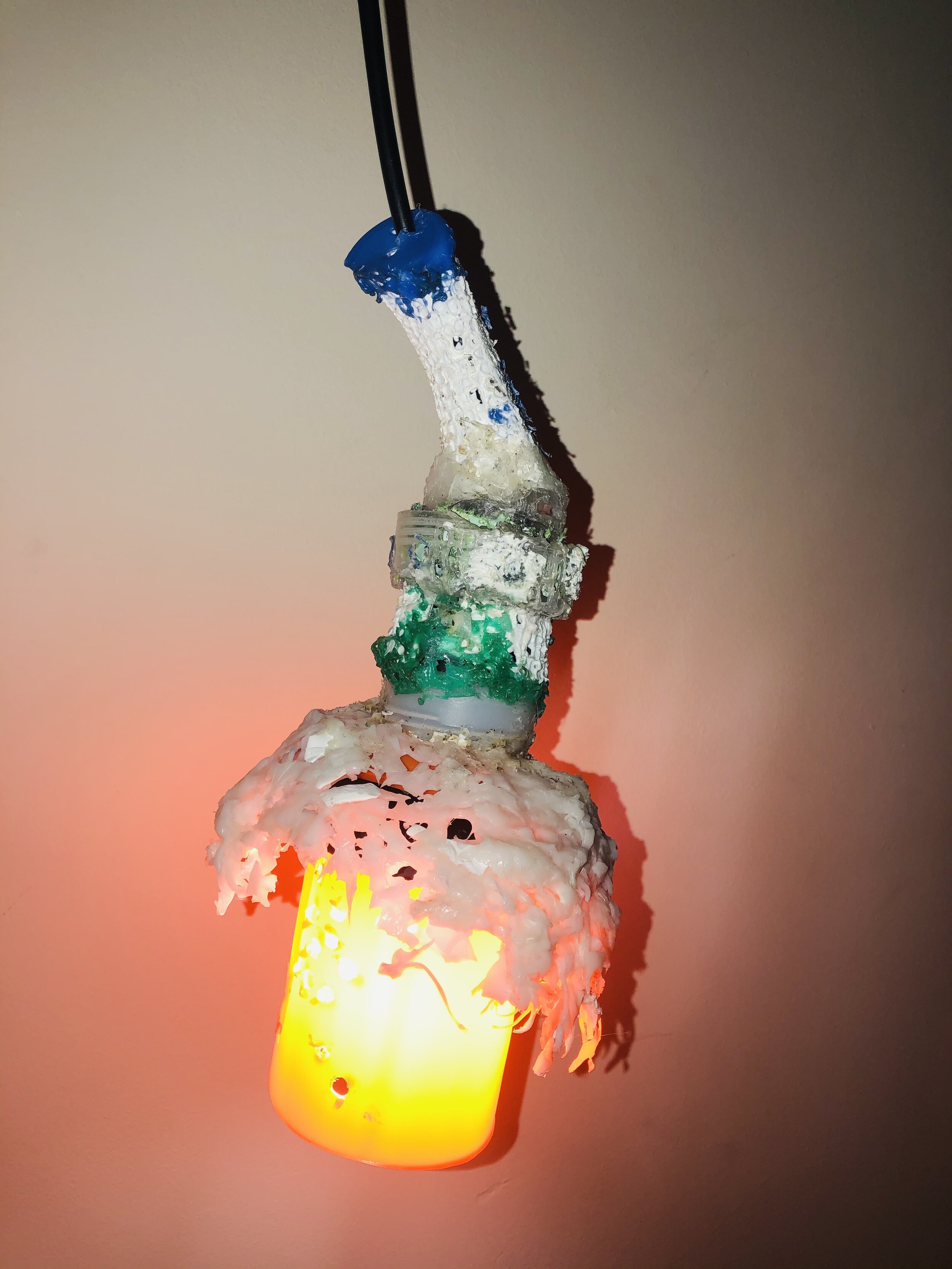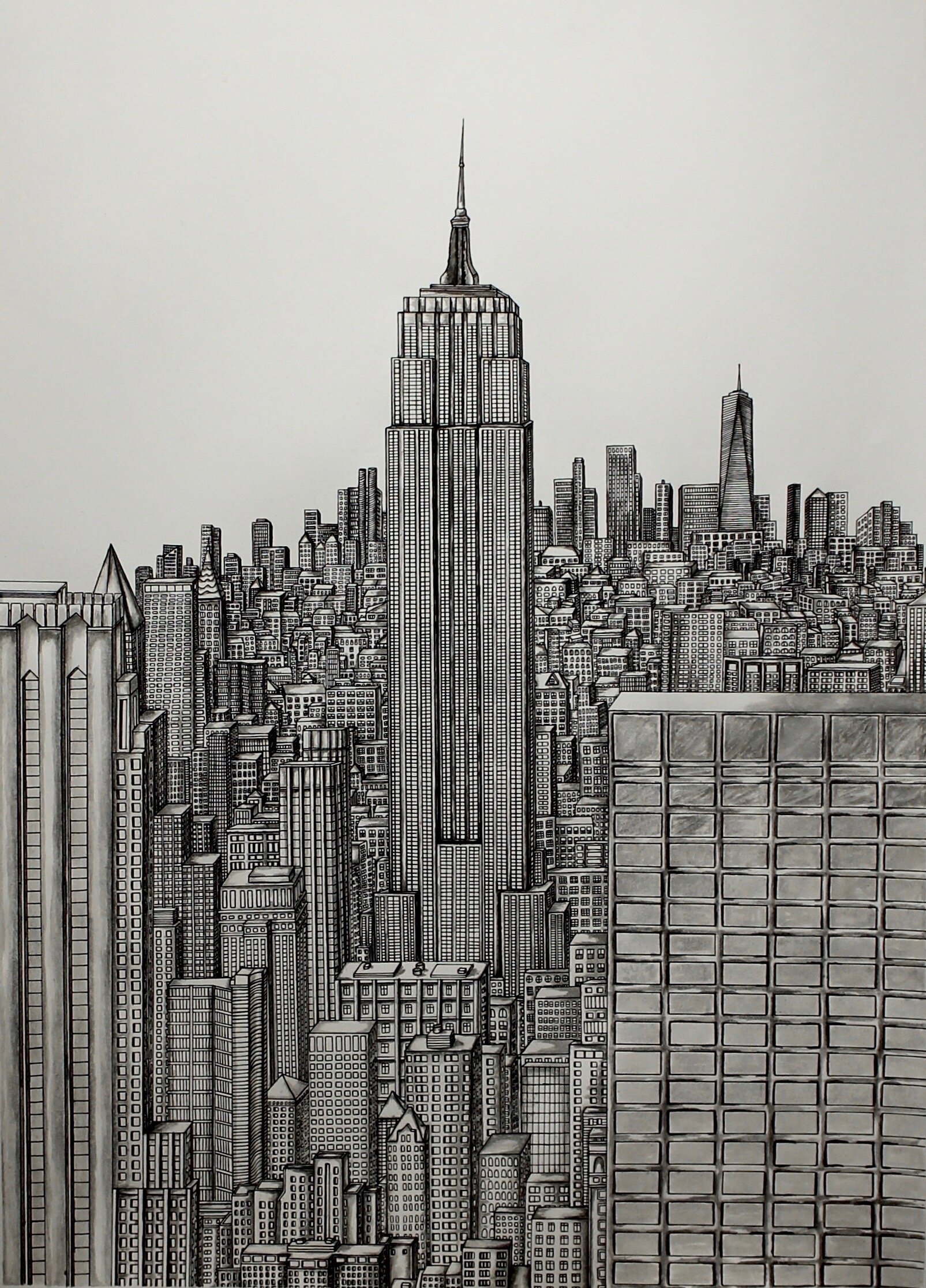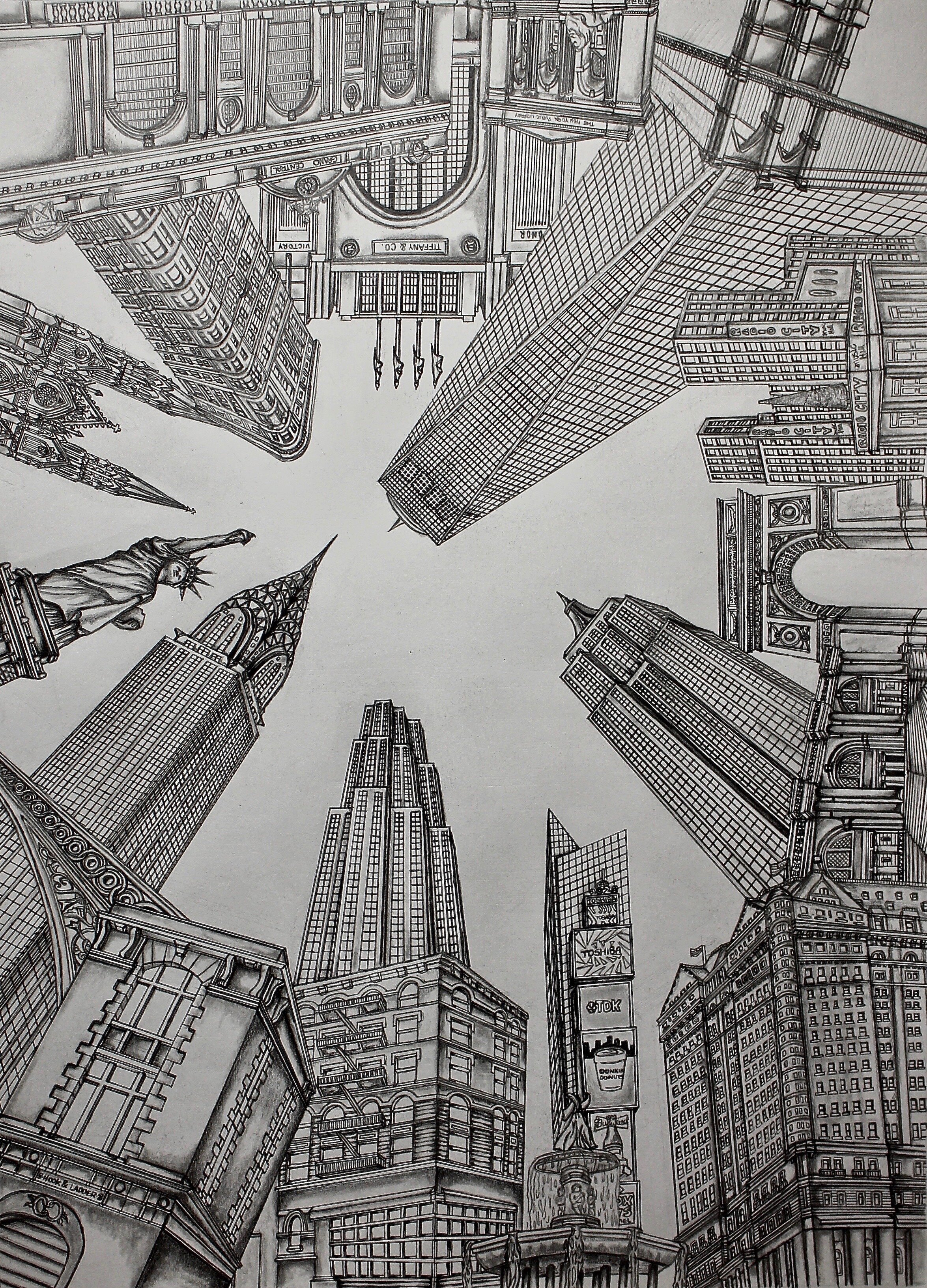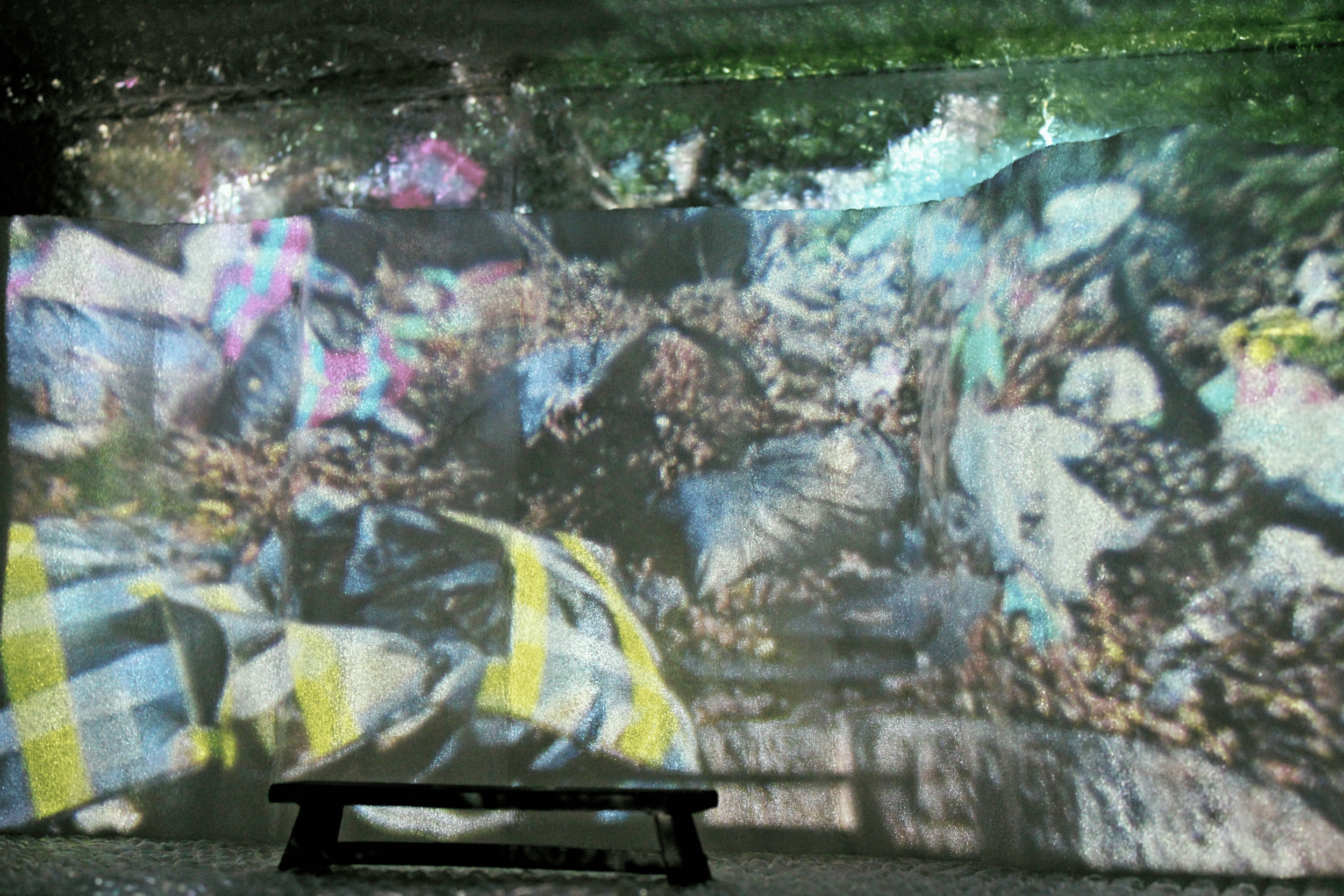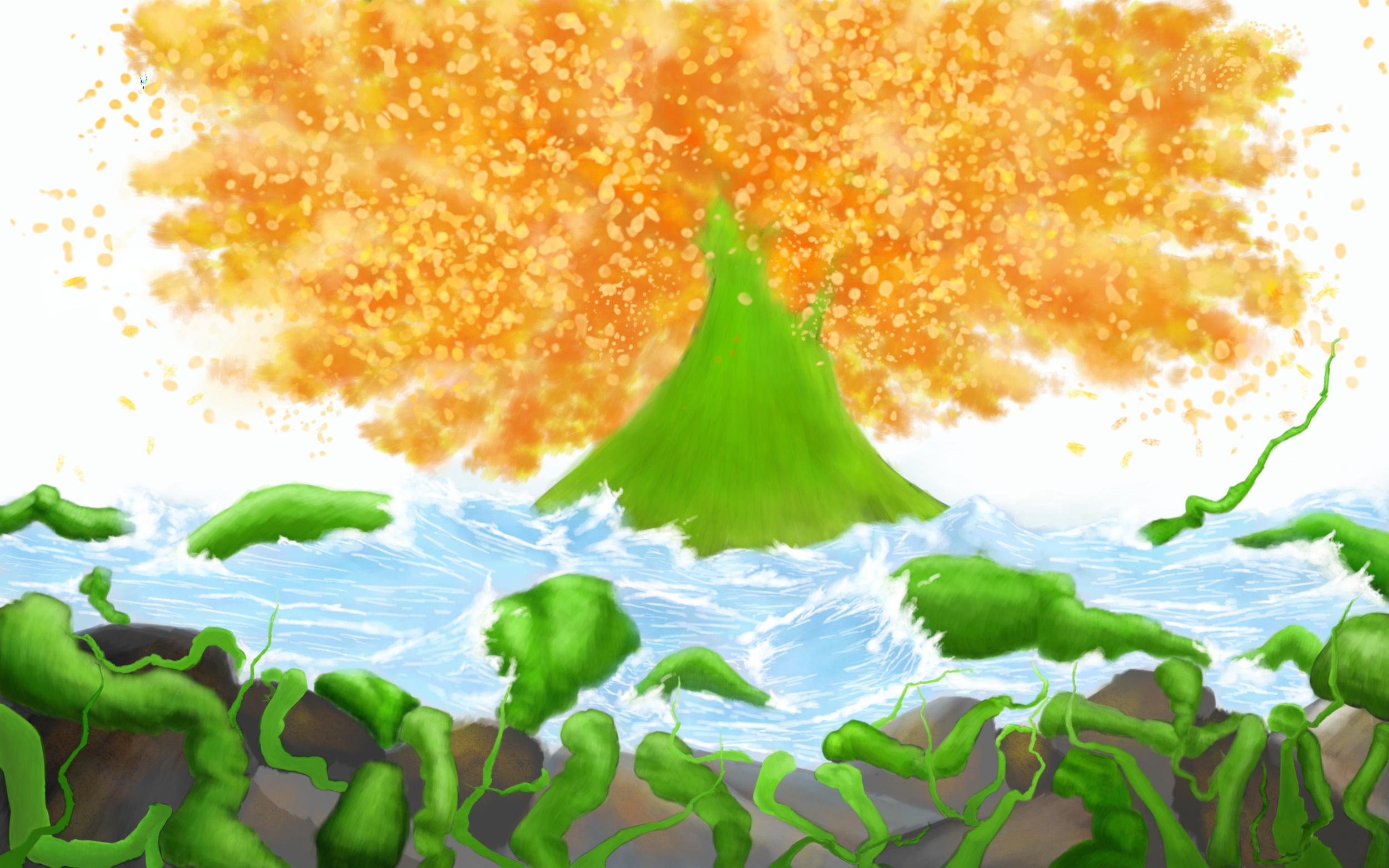Inner and Outer Landscapes
15 January - 28 February
Online Exhibition
Charlotte Devon Sendall
Chloe Thomas
Erin Simpson
Isabel Florence Nelson
Jasmine Tew
Katie Farrow
Maya Bou-Gharios
Ruqqayah Mohungoo
Inner and Outer Landscapes is an exhibition of new work by second year Fine Arts Students from Sheffield Hallam University.
All of the artists within this online exhibition are concerned with place and orientation, situating things within broader socio-political and ecological contexts. What does it mean to locate ourselves? And what can we learn from joining the dots within a given landscape? Some of the artists are looking at architectural landmarks, others at how the built environments can, over decades, contribute towards more or less hostile conditions for life. By questioning our role and actions in relation to climate and humanitarian collapse, the artists speculate a range of futures that await us.
More information about the artists can be found towards the bottom of the page.
Exploring Venice
(from left to right)
Aged, watercolour, mixed media on ripped cardboard, 21 x 30 cm
Decay, watercolour, mixed media on MDF, 21 x 30 cm
Exposed, watercolour, mixed media on cardboard 42 x 29 cm
Tone, fine liner on card 15 x 15 cm
Charlotte Devon Sendall
Waste Management, 30 x 17 x 17 cm
Chloe Thomas
Before and After, lino print, 21 x 16 cm
Erin Simpson
Why Is New York So Popular For Filming?, fine liner and ink
Isabel Florence Nelson
Stuck, mixed media, 170 x 40 x 5 cm
Jasmine Tew
Microplastic Gallery, mixed media, 80 x 30 x 30 cm
Katie Farrow
Microplastic Rain, digital photograph
Maya Bou-Gharios
New World, 42 x 68 cm
Ruqqayah Mohungoo
Charlotte Devon Sendall
After visiting Italy for my 21st birthday, I chose to base my work from my travels there and mainly focus on the architecture and surrounding sights of the “floating city” - Venice. My reasoning for choosing Venice as the foundation to my work is due to the fact that I am really excited by this historically rich, impressive setting I had been wandering through during Summer. To my advantage I had taken my camera and took plenty of photographs of monumental sights, thus aiding my visual material to work from when I returned home. I have a real interest in medieval architecture, and much of my research is established from Ian Murphy and his tutorials I have found on YouTube. He creates rather bleak gloomy scenes of Venetian landscapes. So with this in mind, I have been more than prepared to make a start on my artwork.
Much of my experimentation has come about through an exploration of materials, and testing different media, in the hopes I can bring this aura and sense of Venice into my work. For example, ageing my paper and surface preparation has been a key feature within this project, as I feel this creates an atmosphere and adds dimension to allow the drawings to feel more realistic and natural. In essence, I have tried to incorporate certain elements such as decay, destruction and dilapidation into my journey within my sketchbook. The main components of my final image are backed onto MDF, and I have used acrylic paint, watercolour paint, PVA Glue, tissue paper and a range of fine liners to get my achieved result.
Chloe Thomas
My creative works pivot around the everyday ideas of waste and its management. On average only 9% of what we throw away is recyclable, so what can we do with the rest of that rubbish?
The beauty that comes with extending the useless life of objects that we call “trash”, leaves myself with limitless materials to produce new working items. I ended up being consumed with the differentiation of light through dissimilar waste material, which led me to my starting point of upcycling practical lighting in the form of sculpture. This particular piece is made up from only reclaimed HDPE plastic, consisting of milk bottles, laundry bottles and a selection of cleaning bottles. Due to the relatively low melting point of this particular element I was able to find a number of ways to bend, shape and join, using only a simple oven and a soldiering iron for the smaller details.
Erin Simpson
My work is based on architecture and the shapes you may find within. It is also based on my dog and the places she has visited. My lino prints of York Minster highlight the different shapes you can see in the architecture when the lines are black and when they are white. The contrast in colours makes different aspects of the prints stand out. To make the work I visited York Minster with my dog, Mini, and photographed it from many different angles to help me decide which shapes I wanted to feature the most. My dog is a key feature in my work as I wanted to experiment how she can blend into the architecture and if she can be noticed or if observers think she is just another shape within the building.
Isabel Florence Nelson
Locations featured in a film are just as important as the casting. People often remember a film when they recognise a location that featured. A well-chosen location sets the scene. New York is the most popular chosen destination to set/shoot films. 17,241 scenes in a variety of films, have taken place there. Through looking at NYC based films, Isabel wanted to explore escapism and how films give you that feeling. Isabel decided to base her project on New York, it’s architecture and the film industry, as she is very passionate about all three. In her project, she has looked at a variety of artists for inspiration. One in particular, was Academy Award winning Artistic Director Cedric Gibbons.
The first of Isabel’s exhibition pieces is her take on an immersive view of popular NYC film locations. After experimenting on Photoshop with the locations, she decided it would work well if she produced a piece in a comic/animated style, by using pencil. Through Isabel’s love of architecture and buildings, she wanted to create a similar feeling as to when a character – typically in a NYC based film – rotates looking upwards, taking in the enormity of the buildings and their surroundings. Therefore, drawing the viewer in, and again, immersing them into the picture.
The second of Isabel’s exhibition pieces is of a famous viewpoint originally taken from the Rockefeller Centre. This shot can be seen in a variety of films. She recreated her own version using fine liner and ink.
Jasmine Tew
My sculptural piece is influenced by hostile architecture and neglected areas and aims to provide a physical metaphor for the lack of social mobility experienced by many. Approximately 14 million people in the UK live in poverty and my work seeks to question the barriers that these people face, such as unemployment, minimum wage, benefit cuts, cheap housing, needing free school meals etc. I wanted my piece to feel intimidating and confrontational. This sculpture was made entirely from things I already owned or had found in skips. The ladder as a whole represents the system of society and each step reflects the obstacles poorer people are prone to experience. Methods used to compose my work were kept uncomplex, as I wanted the piece to be made simple and clear. Materials used were influenced by anti-homelessness architecture, crime, being neglected by society, and the struggle people encounter trying to escape it. I think the ugly and aggressive appearance of the ladder matches the experiences and areas around victims of poverty. Throughout my practice, artist like Conor Rogers, Ewan Johnston and the arte povera movement have inspired me. I have intended to display a dull and bleak feel to represent working class culture and being financially and culturally forgotten about. For me, it was important that I made this work as 20% of people in the UK are unable to afford basic essentials, which is something that doesn’t sit right with me.
Katie Farrow
Microplastic Gallery explores the continuous flow of plastic entering our earth, oceans and atmosphere, as the aim of the exhibition is to start sustainable conversations.
Using recycled items such as foam core, Styrofoam and LED lighting, Farrow created her own synthetic environment to exhibit photographs, enhanced using the textured walls, ceiling and floor. Wrapping the gallery space using bubble wrap and foam sheets, each photo is absorbed by the surfaces to obscure the projections accumulated over the year of 2020. Fly tipping and littering were how most of the materials were collected, such as, bottle caps, plastic bags, single use trays and poly sheeting. These locations feature within some images of the exhibition.
Displayed within each of these images are some of the most widely used disposable plastics and how they break down, only to remain within our environment as micro plastics.
Maya Bou-Gharios
I have always been fascinated by nature and the planet, including the creatures that inhabit it. It repels me to see how we are destroying the natural resources, habitats and species that the earth has provided us with. I take inspiration from the environmental artworks of Kristof Kintera, Chris Jordan and Alvaro Soler Arpa, as well as environmental documentaries.
I make artwork to address the impacts that our planet and environment are facing due to our reckless actions. Scientists are constantly gathering new data about detrimental human effects on the environment, yet many people are in the dark about this. Our planet is in a real crisis and therefore I am passionate about making others more aware of all the serious issues that are happening. I portray these issues though several types of media in my art, including photography, sculpture and video.
The piece of work that I have chosen for this exhibition is a photographic image I took to visually represent how invisible microplastics are falling onto our food. The results of a study by researchers at Heriot-Watt University, found that people are likely to consume about 114 plastic microfibres each meal simply from the household dust that settles on their plates. I used finely grated pieces of parmesan cheese, dyed blue with food colouring, to represent the microplastics. To capture the “microplastics” in the air falling onto the plate, I had assistance with sprinkling the dyed parmesan from a colander whilst I took photographs.
Ruqqayah Mohungoo
Focusing my attention on impressionism and the surreal helps me escape reality and explore the unimagined. As I often find myself drawn to the ocean and it’s unique creatures that occupy an otherworldly environment. My practice contains a lot of drawing as it is the start of my process, but I mostly rely on Ink these day for its ability to be versatile with the power of mark making allowing your desired silhouette to come to life achieving greatness. Clay plays a different role from paintings for its ability to concentrate on only the main with no limitation.
My project is about merging two environments together to create an entirely new fantasy land. I have combined two elements from places that I have visited namely the Peak District and Devon and went on to express the beauty in the scenery whilst focusing on my impression and emotional connection to these places, allowing me to take my work to the extreme. I wanted my work to appear almost dreamlike as a fantasy focusing on how nature is harsh but also beautiful.
I am habitually focusing on the sea and various types of trees whilst incorporating how different elements are effected depending on the time of day, enforcing a simple colour pallet and expressive forms. By making my work digital it became more accessible and it allowed me to create freely with a clean finish.
